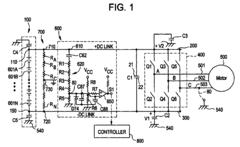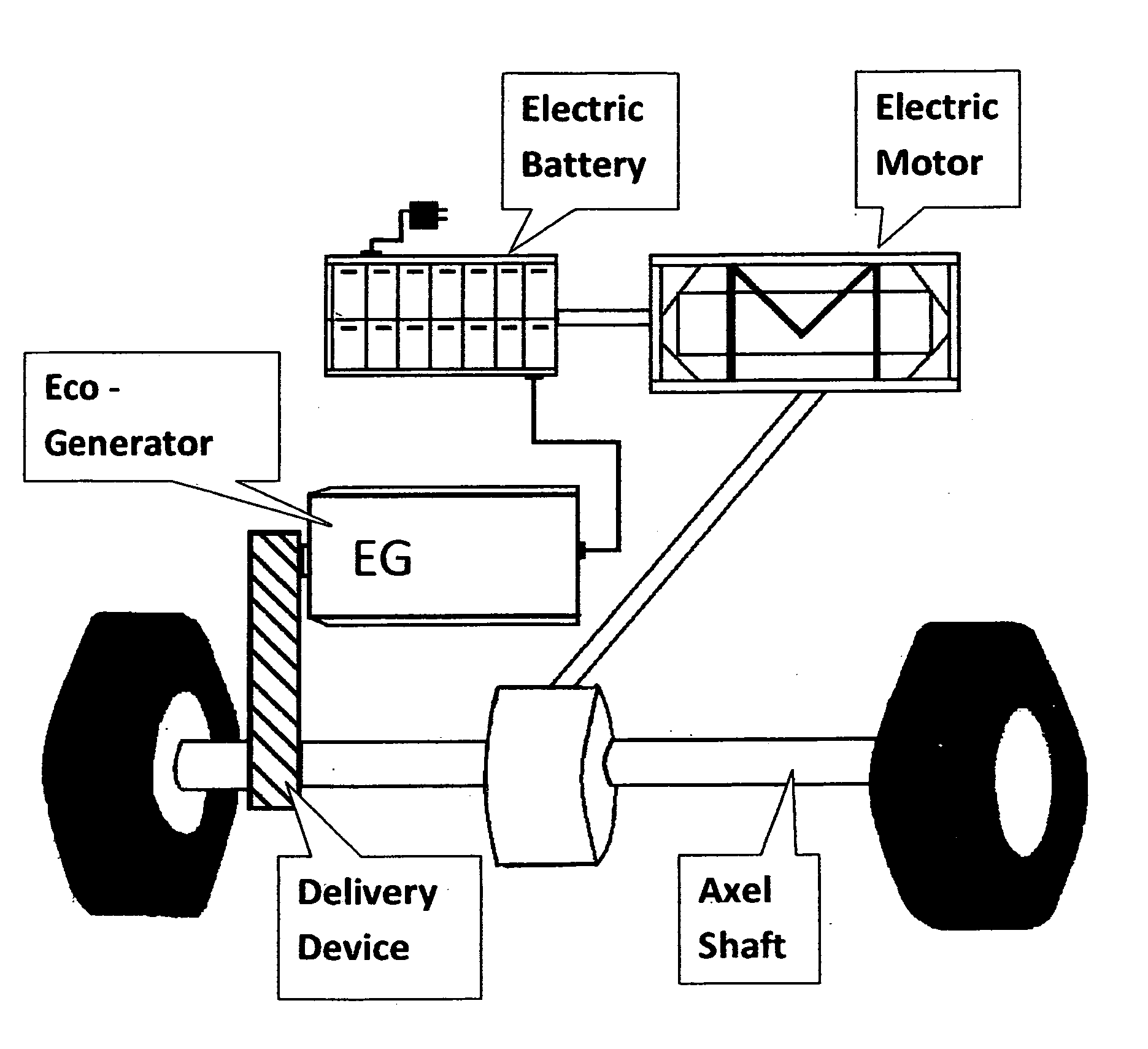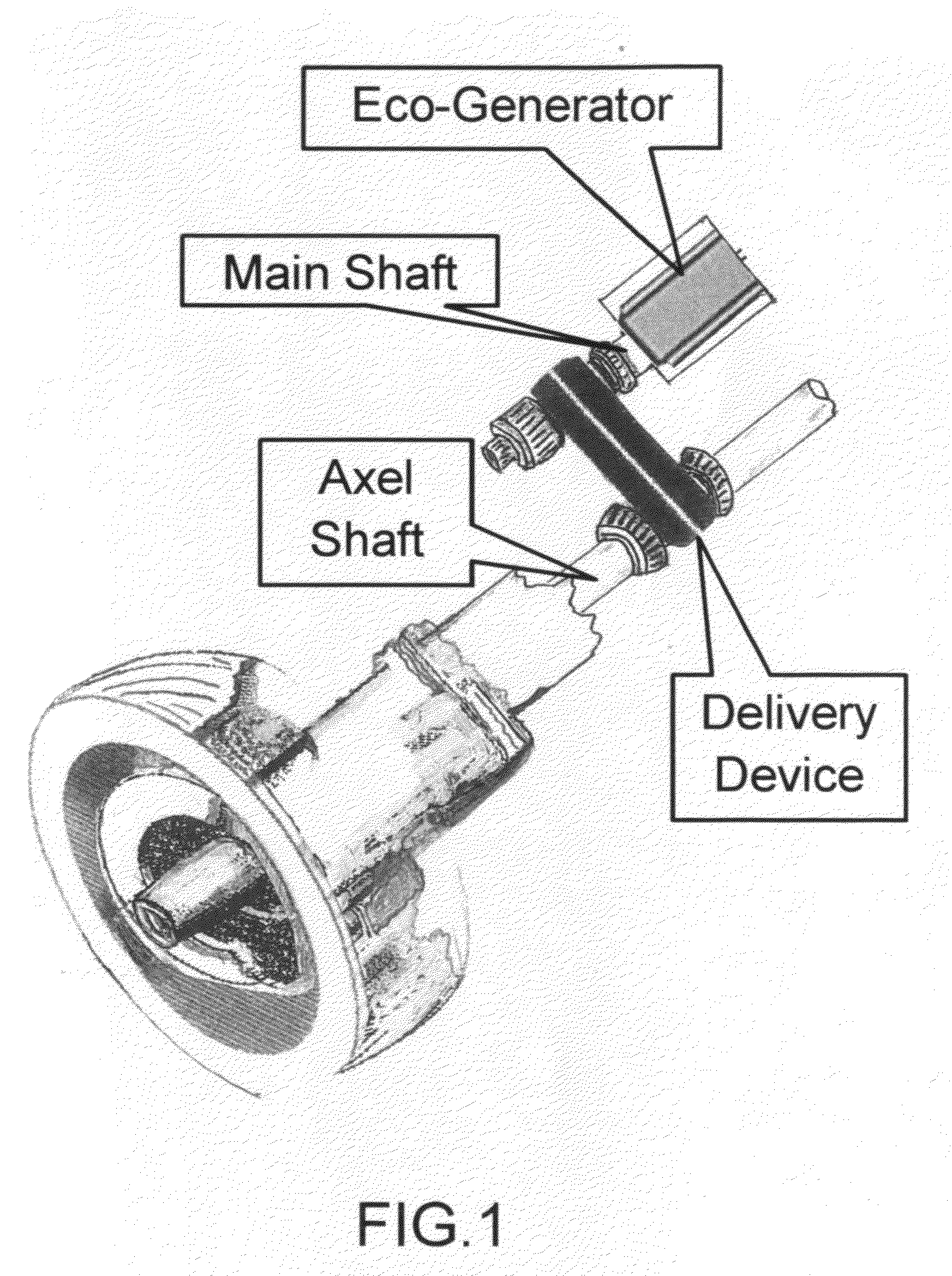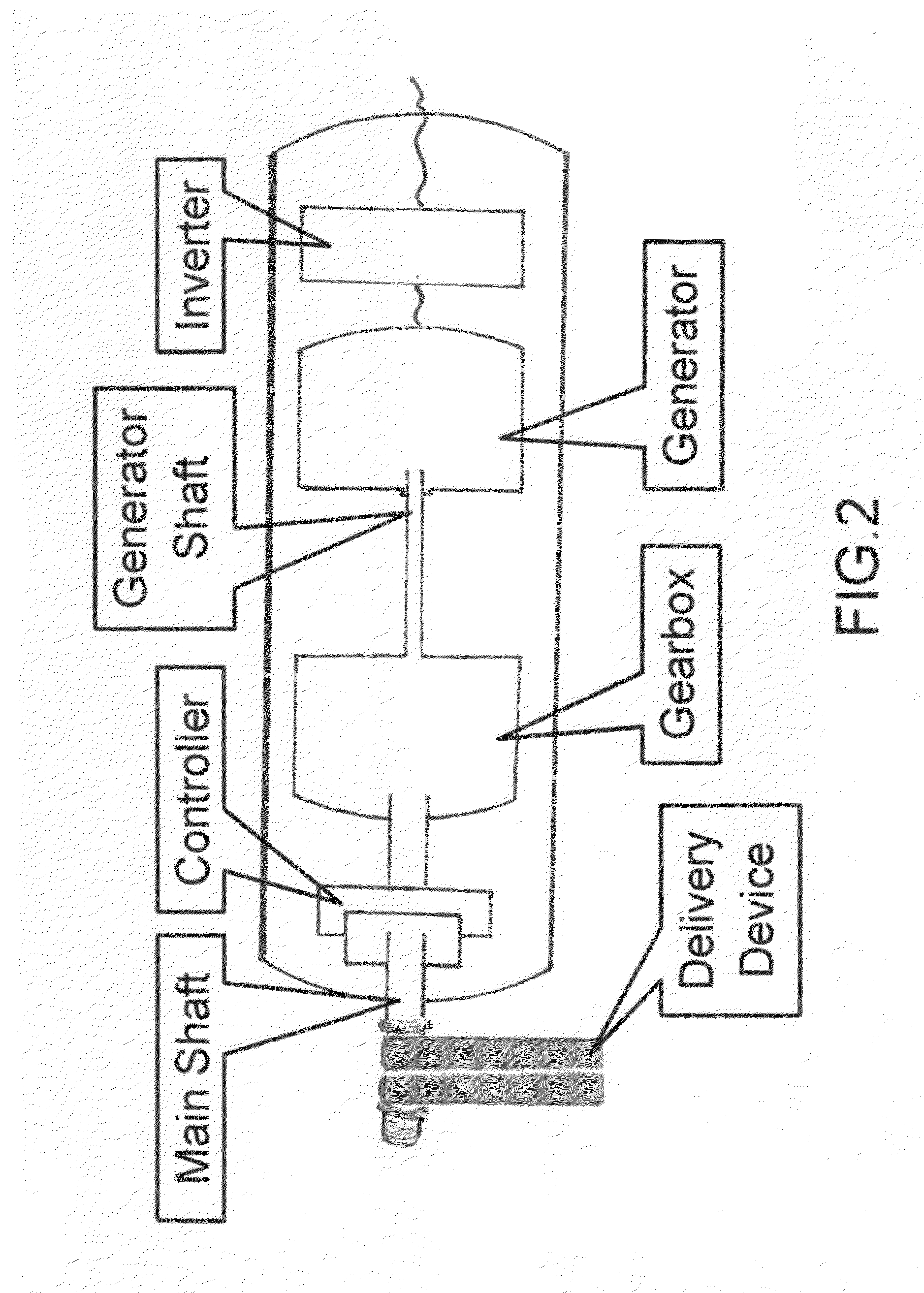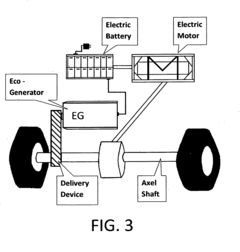HEV in Public Transit: Overcoming Long-Distance Barriers
AUG 14, 20259 MIN READ
Generate Your Research Report Instantly with AI Agent
Patsnap Eureka helps you evaluate technical feasibility & market potential.
HEV Transit Evolution and Objectives
Hybrid Electric Vehicles (HEVs) have emerged as a promising solution to address the environmental and energy challenges faced by the public transit sector. The evolution of HEV technology in public transportation has been driven by the need to reduce emissions, improve fuel efficiency, and overcome the limitations of traditional fossil fuel-powered vehicles. This technological progression has been marked by significant milestones and innovations over the past few decades.
The primary objective of integrating HEVs into public transit systems is to create a more sustainable and efficient transportation infrastructure. By combining the benefits of electric propulsion with conventional internal combustion engines, HEVs aim to bridge the gap between fully electric vehicles and traditional diesel-powered buses. This hybrid approach seeks to overcome the long-distance barriers that have historically limited the adoption of fully electric vehicles in public transit.
One of the key goals in HEV transit development is to extend the operational range of vehicles without compromising on performance or increasing costs significantly. This involves optimizing the balance between electric and conventional power sources to maximize efficiency across various driving conditions and routes. Additionally, there is a focus on developing advanced energy management systems that can intelligently distribute power between the electric motor and the internal combustion engine, further enhancing fuel economy and reducing emissions.
Another critical objective is to improve the overall reliability and durability of HEV transit vehicles. Public transportation systems require vehicles that can withstand frequent starts and stops, operate for extended hours, and maintain consistent performance under diverse weather conditions. As such, HEV technology aims to deliver robust powertrains and battery systems that can meet these demanding requirements while minimizing maintenance needs and downtime.
The evolution of HEV technology in public transit also encompasses advancements in charging infrastructure and energy storage capabilities. Objectives in this area include developing fast-charging solutions, improving battery life and capacity, and exploring innovative energy storage technologies such as regenerative braking systems. These developments are crucial for enabling HEVs to operate efficiently on long-distance routes and reducing the need for frequent refueling or recharging stops.
Furthermore, the integration of HEVs into public transit systems aims to address the broader goals of smart city initiatives and sustainable urban development. This includes enhancing connectivity and data-driven operations through the implementation of telematics and IoT technologies in HEV fleets. Such advancements enable real-time monitoring of vehicle performance, predictive maintenance, and optimized route planning, contributing to more efficient and responsive public transportation services.
The primary objective of integrating HEVs into public transit systems is to create a more sustainable and efficient transportation infrastructure. By combining the benefits of electric propulsion with conventional internal combustion engines, HEVs aim to bridge the gap between fully electric vehicles and traditional diesel-powered buses. This hybrid approach seeks to overcome the long-distance barriers that have historically limited the adoption of fully electric vehicles in public transit.
One of the key goals in HEV transit development is to extend the operational range of vehicles without compromising on performance or increasing costs significantly. This involves optimizing the balance between electric and conventional power sources to maximize efficiency across various driving conditions and routes. Additionally, there is a focus on developing advanced energy management systems that can intelligently distribute power between the electric motor and the internal combustion engine, further enhancing fuel economy and reducing emissions.
Another critical objective is to improve the overall reliability and durability of HEV transit vehicles. Public transportation systems require vehicles that can withstand frequent starts and stops, operate for extended hours, and maintain consistent performance under diverse weather conditions. As such, HEV technology aims to deliver robust powertrains and battery systems that can meet these demanding requirements while minimizing maintenance needs and downtime.
The evolution of HEV technology in public transit also encompasses advancements in charging infrastructure and energy storage capabilities. Objectives in this area include developing fast-charging solutions, improving battery life and capacity, and exploring innovative energy storage technologies such as regenerative braking systems. These developments are crucial for enabling HEVs to operate efficiently on long-distance routes and reducing the need for frequent refueling or recharging stops.
Furthermore, the integration of HEVs into public transit systems aims to address the broader goals of smart city initiatives and sustainable urban development. This includes enhancing connectivity and data-driven operations through the implementation of telematics and IoT technologies in HEV fleets. Such advancements enable real-time monitoring of vehicle performance, predictive maintenance, and optimized route planning, contributing to more efficient and responsive public transportation services.
Long-Distance Transit Market Analysis
The long-distance transit market has been experiencing significant growth and transformation in recent years, driven by increasing urbanization, economic development, and the need for sustainable transportation solutions. This market segment encompasses various modes of public transportation, including buses, trains, and hybrid electric vehicles (HEVs), which are designed to cover extended routes between cities or regions.
The demand for long-distance public transit has been steadily rising, fueled by factors such as population growth, urban sprawl, and the desire for more environmentally friendly travel options. According to industry reports, the global long-distance bus market alone is projected to reach a value of over $70 billion by 2025, with a compound annual growth rate (CAGR) of approximately 6% during the forecast period.
HEVs have emerged as a promising solution to address the challenges of long-distance public transit, offering a balance between environmental sustainability and operational efficiency. The market for HEVs in public transportation is expected to grow substantially, with some estimates suggesting a CAGR of around 8% over the next five years. This growth is driven by increasing government initiatives to reduce carbon emissions, rising fuel costs, and advancements in battery technology.
One of the key trends shaping the long-distance transit market is the integration of smart technologies and connectivity solutions. These innovations enhance passenger experience, improve operational efficiency, and provide real-time data for better route planning and management. The adoption of such technologies is expected to accelerate in the coming years, creating new opportunities for service providers and technology companies alike.
Despite the positive outlook, the long-distance transit market faces several challenges, particularly in the context of HEV adoption. Range anxiety remains a significant concern for operators and passengers, especially on routes exceeding 300 kilometers. Additionally, the high initial cost of HEVs compared to conventional vehicles and the need for charging infrastructure along long-distance routes pose barriers to widespread adoption.
Market analysis indicates that the Asia-Pacific region is expected to witness the highest growth in the long-distance transit market, driven by rapid urbanization, government investments in public transportation, and increasing environmental awareness. North America and Europe are also significant markets, with a strong focus on transitioning to cleaner transportation solutions.
In conclusion, the long-distance transit market presents substantial opportunities for HEV integration, supported by growing demand for sustainable transportation and technological advancements. However, overcoming the barriers related to range limitations and infrastructure development will be crucial for the successful adoption of HEVs in long-distance public transit operations.
The demand for long-distance public transit has been steadily rising, fueled by factors such as population growth, urban sprawl, and the desire for more environmentally friendly travel options. According to industry reports, the global long-distance bus market alone is projected to reach a value of over $70 billion by 2025, with a compound annual growth rate (CAGR) of approximately 6% during the forecast period.
HEVs have emerged as a promising solution to address the challenges of long-distance public transit, offering a balance between environmental sustainability and operational efficiency. The market for HEVs in public transportation is expected to grow substantially, with some estimates suggesting a CAGR of around 8% over the next five years. This growth is driven by increasing government initiatives to reduce carbon emissions, rising fuel costs, and advancements in battery technology.
One of the key trends shaping the long-distance transit market is the integration of smart technologies and connectivity solutions. These innovations enhance passenger experience, improve operational efficiency, and provide real-time data for better route planning and management. The adoption of such technologies is expected to accelerate in the coming years, creating new opportunities for service providers and technology companies alike.
Despite the positive outlook, the long-distance transit market faces several challenges, particularly in the context of HEV adoption. Range anxiety remains a significant concern for operators and passengers, especially on routes exceeding 300 kilometers. Additionally, the high initial cost of HEVs compared to conventional vehicles and the need for charging infrastructure along long-distance routes pose barriers to widespread adoption.
Market analysis indicates that the Asia-Pacific region is expected to witness the highest growth in the long-distance transit market, driven by rapid urbanization, government investments in public transportation, and increasing environmental awareness. North America and Europe are also significant markets, with a strong focus on transitioning to cleaner transportation solutions.
In conclusion, the long-distance transit market presents substantial opportunities for HEV integration, supported by growing demand for sustainable transportation and technological advancements. However, overcoming the barriers related to range limitations and infrastructure development will be crucial for the successful adoption of HEVs in long-distance public transit operations.
HEV Technology Challenges in Public Transport
The integration of Hybrid Electric Vehicles (HEVs) in public transit systems presents significant technological challenges, particularly when addressing long-distance routes. These challenges stem from the unique operational requirements of public transportation and the limitations of current HEV technology.
One of the primary obstacles is the energy storage capacity of HEVs. While suitable for personal vehicles and short urban routes, the battery systems in most HEVs struggle to meet the demands of long-distance public transit. Extended routes require substantial energy reserves, which current battery technologies struggle to provide without compromising vehicle weight, passenger capacity, or operational efficiency.
Power management systems pose another critical challenge. Public transit vehicles operate under varied conditions, from frequent stops in urban areas to sustained high-speed travel on highways. Developing a power management system that can efficiently balance the use of electric and combustion power across these diverse scenarios is complex. The system must optimize energy usage, minimize emissions, and maintain performance consistency throughout long journeys.
The durability and lifespan of HEV components in high-mileage public transit applications present additional hurdles. Transit vehicles typically operate for extended hours daily, accumulating mileage rapidly. This intense usage pattern places significant stress on hybrid powertrains, batteries, and associated electronic systems. Ensuring these components can withstand such demanding conditions while maintaining efficiency and reliability over the vehicle's operational life is a substantial engineering challenge.
Charging infrastructure for long-distance routes is another significant barrier. While urban areas may have established charging networks, long-distance routes often traverse regions with limited charging capabilities. Developing a charging strategy that doesn't compromise route schedules or require extensive stops is crucial for the practical implementation of HEVs in long-distance public transit.
The thermal management of HEV systems during extended operations is also a notable challenge. Long-distance travel generates substantial heat in both the electric and combustion components of the hybrid system. Effective cooling solutions that can maintain optimal operating temperatures without adding excessive weight or complexity to the vehicle are essential for ensuring performance and longevity.
Lastly, the integration of HEV technology with existing public transit systems poses logistical and operational challenges. Transit authorities must consider how to phase in HEV vehicles, train maintenance staff, and adapt operational procedures to accommodate the unique characteristics of hybrid systems. This transition requires careful planning and potentially significant infrastructure investments.
One of the primary obstacles is the energy storage capacity of HEVs. While suitable for personal vehicles and short urban routes, the battery systems in most HEVs struggle to meet the demands of long-distance public transit. Extended routes require substantial energy reserves, which current battery technologies struggle to provide without compromising vehicle weight, passenger capacity, or operational efficiency.
Power management systems pose another critical challenge. Public transit vehicles operate under varied conditions, from frequent stops in urban areas to sustained high-speed travel on highways. Developing a power management system that can efficiently balance the use of electric and combustion power across these diverse scenarios is complex. The system must optimize energy usage, minimize emissions, and maintain performance consistency throughout long journeys.
The durability and lifespan of HEV components in high-mileage public transit applications present additional hurdles. Transit vehicles typically operate for extended hours daily, accumulating mileage rapidly. This intense usage pattern places significant stress on hybrid powertrains, batteries, and associated electronic systems. Ensuring these components can withstand such demanding conditions while maintaining efficiency and reliability over the vehicle's operational life is a substantial engineering challenge.
Charging infrastructure for long-distance routes is another significant barrier. While urban areas may have established charging networks, long-distance routes often traverse regions with limited charging capabilities. Developing a charging strategy that doesn't compromise route schedules or require extensive stops is crucial for the practical implementation of HEVs in long-distance public transit.
The thermal management of HEV systems during extended operations is also a notable challenge. Long-distance travel generates substantial heat in both the electric and combustion components of the hybrid system. Effective cooling solutions that can maintain optimal operating temperatures without adding excessive weight or complexity to the vehicle are essential for ensuring performance and longevity.
Lastly, the integration of HEV technology with existing public transit systems poses logistical and operational challenges. Transit authorities must consider how to phase in HEV vehicles, train maintenance staff, and adapt operational procedures to accommodate the unique characteristics of hybrid systems. This transition requires careful planning and potentially significant infrastructure investments.
Current HEV Solutions for Long-Distance Transit
01 Battery management for long-distance travel
Efficient battery management systems are crucial for HEVs during long-distance travel. These systems optimize energy usage, monitor battery health, and ensure proper charging and discharging cycles. Advanced algorithms and sensors are employed to maximize battery life and overall vehicle performance during extended journeys.- Battery management for long-distance travel: Efficient battery management systems are crucial for HEVs during long-distance travel. These systems optimize power distribution between the electric motor and internal combustion engine, monitor battery health, and implement intelligent charging strategies to maximize range and performance.
- Thermal management systems for HEVs: Advanced thermal management systems are essential for maintaining optimal operating temperatures of HEV components during extended journeys. These systems regulate battery temperature, manage heat dissipation from the powertrain, and ensure efficient cooling of electronic components to enhance overall vehicle performance and longevity.
- Regenerative braking optimization: Improved regenerative braking systems are designed to maximize energy recovery during long-distance travel. These systems adapt to various driving conditions, optimize brake force distribution, and enhance energy recuperation efficiency to extend the electric range of HEVs.
- Intelligent route planning and energy management: Advanced navigation and energy management systems are developed to optimize HEV performance during long-distance travel. These systems consider factors such as terrain, traffic conditions, and charging station locations to plan efficient routes and manage power distribution between electric and combustion propulsion modes.
- Lightweight materials and aerodynamic design: The use of lightweight materials and aerodynamic design principles in HEVs contributes to improved fuel efficiency and extended range for long-distance travel. Advanced materials and streamlined body designs reduce vehicle weight and air resistance, enhancing overall performance and energy efficiency.
02 Regenerative braking and energy recovery
HEVs utilize regenerative braking systems to recover and store energy during deceleration and braking. This technology is particularly beneficial for long-distance travel, as it helps extend the vehicle's range by converting kinetic energy into electrical energy, which is then stored in the battery for later use.Expand Specific Solutions03 Intelligent route planning and energy management
Advanced navigation systems in HEVs incorporate intelligent route planning algorithms that consider factors such as terrain, traffic conditions, and charging station locations. These systems optimize energy usage and help drivers plan efficient long-distance trips by suggesting optimal routes and charging strategies.Expand Specific Solutions04 Thermal management for battery and powertrain
Effective thermal management systems are essential for maintaining optimal performance and efficiency of HEVs during long-distance travel. These systems regulate the temperature of batteries, electric motors, and other powertrain components to prevent overheating and ensure consistent performance in various driving conditions.Expand Specific Solutions05 Adaptive driving modes for long-distance efficiency
HEVs equipped with adaptive driving modes can automatically adjust power distribution between the electric motor and internal combustion engine based on driving conditions and distance. These modes optimize fuel efficiency and battery usage during long-distance travel, ensuring a balance between performance and energy conservation.Expand Specific Solutions
Key Players in HEV Public Transit Sector
The HEV public transit market is in a growth phase, with increasing demand for sustainable transportation solutions. The market size is expanding as cities worldwide seek to reduce emissions and improve energy efficiency. Technologically, HEVs for long-distance public transit are advancing, but challenges remain in battery capacity and charging infrastructure. Key players like Toyota, Ford, and Hyundai are investing heavily in R&D to overcome these barriers. Chinese manufacturers such as SAIC and Geely are also making significant strides. The competition is fierce, with companies racing to develop more efficient powertrains, lightweight materials, and advanced energy management systems to extend HEV range for public transit applications.
Toyota Motor Corp.
Technical Solution: Toyota has developed advanced HEV technology for public transit, focusing on their Hybrid Synergy Drive system. This system combines a gasoline engine with electric motors, optimized for long-distance travel. Toyota's approach includes regenerative braking to capture energy during deceleration, and an intelligent power management system that switches between electric and gasoline power for maximum efficiency[1]. For long-distance public transit, Toyota has implemented larger battery packs and more powerful electric motors, allowing for extended electric-only operation in urban areas and seamless transition to hybrid mode for highway driving[2]. The company has also introduced plug-in capabilities to some of their HEV models, enabling overnight charging at depots to further extend electric range[3].
Strengths: Proven reliability, high fuel efficiency, and extensive experience in hybrid technology. Weaknesses: Higher initial cost compared to conventional buses, and potential complexity in maintenance for transit operators.
Ford Global Technologies LLC
Technical Solution: Ford's approach to HEV in public transit focuses on their proprietary PowerSplit hybrid architecture. This system utilizes a planetary gear set to efficiently distribute power between the internal combustion engine and electric motor[4]. For long-distance applications, Ford has enhanced their battery management system to optimize energy usage over extended routes. They've also implemented predictive energy management, which uses route information and real-time traffic data to anticipate power needs and adjust the powertrain accordingly[5]. Ford's HEV transit solutions incorporate a high-voltage lithium-ion battery pack, allowing for increased electric-only range in urban areas. The company has also developed a modular approach to their HEV powertrains, enabling easier integration into various bus sizes and configurations[6].
Strengths: Flexible powertrain solutions adaptable to different transit vehicle sizes, advanced energy management systems. Weaknesses: Less market presence in the transit bus sector compared to some competitors.
Core Innovations in HEV Range Extension
Ground fault detection system and method
PatentInactiveEP1336528A3
Innovation
- An AC ground fault detection system that uses a switching mechanism to alternate power conductor connections at a predetermined rate, coupled with capacitors and a detector circuit to sense voltage changes relative to a reference potential, generating a fault signal when an unintended electrical path is detected, and a controller to interrupt power to prevent damage.
Method for internally generating electric energy in electric vehicles
PatentInactiveUS20130154363A1
Innovation
- A system that harnesses mechanical rotational energy from the axel shaft to generate electric energy through a specially designed Eco-Generator, converting kinetic energy into a rechargeable power source while the vehicle is in motion, using a delivery device like a belt or chain to transfer energy to the Eco-Generator, comprising a controller, gearbox, generator, and inverter to manage and convert energy for battery recharging.
Environmental Impact of HEV in Public Transit
The implementation of Hybrid Electric Vehicles (HEVs) in public transit systems has significant potential to reduce the environmental impact of transportation. HEVs combine conventional internal combustion engines with electric propulsion systems, offering a balance between the range of traditional vehicles and the emissions benefits of electric vehicles.
One of the primary environmental advantages of HEVs in public transit is the reduction of greenhouse gas emissions. Studies have shown that HEV buses can reduce CO2 emissions by up to 30-40% compared to conventional diesel buses. This reduction is particularly impactful in urban areas where air quality is a major concern. The lower emissions contribute to improved air quality, potentially reducing the incidence of respiratory diseases and other health issues associated with air pollution.
HEVs also demonstrate improved fuel efficiency, which translates to reduced consumption of fossil fuels. This not only decreases the carbon footprint of public transit systems but also helps conserve non-renewable energy resources. The regenerative braking systems in HEVs further enhance their efficiency by capturing and storing energy that would otherwise be lost during deceleration and braking.
Noise pollution is another environmental factor positively impacted by HEVs in public transit. The electric motors in HEVs operate more quietly than traditional combustion engines, especially at low speeds typical in urban environments. This reduction in noise can significantly improve the quality of life for residents in areas with high public transit traffic.
The use of HEVs in public transit can also have indirect environmental benefits. By providing a more environmentally friendly option, HEVs may encourage increased use of public transportation, potentially reducing the number of private vehicles on the road. This shift could lead to further reductions in overall emissions and energy consumption.
However, it is important to consider the full lifecycle environmental impact of HEVs. The production of batteries and other components specific to HEVs can have environmental costs. Proper disposal and recycling of these components at the end of their life cycle are crucial to maximizing the environmental benefits of HEVs in public transit.
In the context of long-distance public transit, the environmental impact of HEVs becomes more complex. While they still offer emissions reductions compared to conventional vehicles, the benefits may be less pronounced over longer distances where the vehicles operate more frequently in hybrid mode rather than pure electric mode. Nevertheless, advancements in battery technology and hybrid systems continue to improve the long-distance performance and environmental benefits of HEVs in public transit applications.
One of the primary environmental advantages of HEVs in public transit is the reduction of greenhouse gas emissions. Studies have shown that HEV buses can reduce CO2 emissions by up to 30-40% compared to conventional diesel buses. This reduction is particularly impactful in urban areas where air quality is a major concern. The lower emissions contribute to improved air quality, potentially reducing the incidence of respiratory diseases and other health issues associated with air pollution.
HEVs also demonstrate improved fuel efficiency, which translates to reduced consumption of fossil fuels. This not only decreases the carbon footprint of public transit systems but also helps conserve non-renewable energy resources. The regenerative braking systems in HEVs further enhance their efficiency by capturing and storing energy that would otherwise be lost during deceleration and braking.
Noise pollution is another environmental factor positively impacted by HEVs in public transit. The electric motors in HEVs operate more quietly than traditional combustion engines, especially at low speeds typical in urban environments. This reduction in noise can significantly improve the quality of life for residents in areas with high public transit traffic.
The use of HEVs in public transit can also have indirect environmental benefits. By providing a more environmentally friendly option, HEVs may encourage increased use of public transportation, potentially reducing the number of private vehicles on the road. This shift could lead to further reductions in overall emissions and energy consumption.
However, it is important to consider the full lifecycle environmental impact of HEVs. The production of batteries and other components specific to HEVs can have environmental costs. Proper disposal and recycling of these components at the end of their life cycle are crucial to maximizing the environmental benefits of HEVs in public transit.
In the context of long-distance public transit, the environmental impact of HEVs becomes more complex. While they still offer emissions reductions compared to conventional vehicles, the benefits may be less pronounced over longer distances where the vehicles operate more frequently in hybrid mode rather than pure electric mode. Nevertheless, advancements in battery technology and hybrid systems continue to improve the long-distance performance and environmental benefits of HEVs in public transit applications.
Infrastructure Requirements for HEV Transit Systems
The implementation of Hybrid Electric Vehicles (HEVs) in public transit systems for long-distance routes requires significant infrastructure adaptations. A comprehensive charging network is essential to support the extended range of these vehicles. This network should include both depot-based charging stations for overnight replenishment and strategically placed rapid-charging stations along routes for mid-journey power boosts.
Depot charging infrastructure must be designed to accommodate the larger battery capacities of long-distance HEVs. High-power charging systems, typically ranging from 150 kW to 350 kW, are necessary to ensure efficient overnight charging. These systems should be equipped with smart grid integration capabilities to optimize charging schedules and manage electricity demand.
En-route charging stations are crucial for maintaining the operational efficiency of long-distance HEV transit. These stations should be positioned at key points along the routes, such as major stops or transfer hubs. Ultra-fast charging technology, capable of delivering up to 450 kW, is recommended to minimize charging times and maintain service schedules.
The electrical grid infrastructure supporting these charging systems must be robust and capable of handling increased power demands. This may require upgrades to local substations and distribution networks. Additionally, the integration of renewable energy sources, such as solar panels at depots or wind turbines near charging stations, can help offset the increased electricity consumption and reduce the carbon footprint of the transit system.
Maintenance facilities for long-distance HEV transit vehicles need specialized equipment and trained personnel. These facilities should be equipped with diagnostic tools capable of analyzing complex hybrid powertrains and high-voltage battery systems. Safety protocols and equipment for handling high-voltage components are essential in these maintenance centers.
Data infrastructure is another critical component. A robust communication network is required to monitor vehicle performance, track energy consumption, and manage charging schedules in real-time. This system should integrate with traffic management systems to optimize route planning and energy usage based on current road conditions and passenger demand.
Lastly, the implementation of HEVs in long-distance public transit necessitates the development of resilient power backup systems. These systems ensure continuous operation during grid outages or emergencies, maintaining the reliability of the transit service. Such backup systems may include large-scale battery storage units or fuel cell generators at key charging locations.
Depot charging infrastructure must be designed to accommodate the larger battery capacities of long-distance HEVs. High-power charging systems, typically ranging from 150 kW to 350 kW, are necessary to ensure efficient overnight charging. These systems should be equipped with smart grid integration capabilities to optimize charging schedules and manage electricity demand.
En-route charging stations are crucial for maintaining the operational efficiency of long-distance HEV transit. These stations should be positioned at key points along the routes, such as major stops or transfer hubs. Ultra-fast charging technology, capable of delivering up to 450 kW, is recommended to minimize charging times and maintain service schedules.
The electrical grid infrastructure supporting these charging systems must be robust and capable of handling increased power demands. This may require upgrades to local substations and distribution networks. Additionally, the integration of renewable energy sources, such as solar panels at depots or wind turbines near charging stations, can help offset the increased electricity consumption and reduce the carbon footprint of the transit system.
Maintenance facilities for long-distance HEV transit vehicles need specialized equipment and trained personnel. These facilities should be equipped with diagnostic tools capable of analyzing complex hybrid powertrains and high-voltage battery systems. Safety protocols and equipment for handling high-voltage components are essential in these maintenance centers.
Data infrastructure is another critical component. A robust communication network is required to monitor vehicle performance, track energy consumption, and manage charging schedules in real-time. This system should integrate with traffic management systems to optimize route planning and energy usage based on current road conditions and passenger demand.
Lastly, the implementation of HEVs in long-distance public transit necessitates the development of resilient power backup systems. These systems ensure continuous operation during grid outages or emergencies, maintaining the reliability of the transit service. Such backup systems may include large-scale battery storage units or fuel cell generators at key charging locations.
Unlock deeper insights with Patsnap Eureka Quick Research — get a full tech report to explore trends and direct your research. Try now!
Generate Your Research Report Instantly with AI Agent
Supercharge your innovation with Patsnap Eureka AI Agent Platform!
